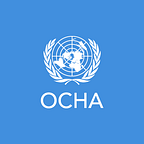Five things to know about the humanitarian situation in Guatemala
As Guatemala grapples with the COVID-19 pandemic, the number of people who need emergency assistance has continued to grow. Areas such as Alta Verapaz and Izabal in north-central Guatemala, still reeling from the impacts of Hurricanes Eta and Iota in 2020, have been particularly affected.
The United Nations and its humanitarian partners continue to support the Guatemalan Government in responding to the needs of vulnerable people across the country.
“We lost everything, we’re in need of help right now, that’s how I would describe our lives at the moment” — Henry lx Monroy, a resident of El Edén.
In August 2021, the UN and partners launched an appeal for US$210 million to fund an 18-month Humanitarian Response Plan (HRP) to protect and save lives and strengthen people’s resilience.
1. Humanitarian needs are growing
Guatemala is home to some 3.8 million people in need, which is about one in every five people in the country. The number of people who need assistance has grown by half a million since the beginning of 2020. More than half of the country’s population lives in poverty, with 18 per cent living in extreme poverty.
The pandemic reversed at least six years of development progress, a setback made worse by Hurricanes Eta and Iota in late 2020 and their devastating impacts on 1.8 million people who required assistance after the storms.
The resulting crises are creating more needs for more people dealing with chronic food insecurity, deteriorating livelihoods, violence and displacement, and further overwhelming essential services such as health care, access to water and food, education and protection.
2. Food security and nutrition are pressing concerns
Food security and nutrition have long been primary humanitarian concerns in Guatemala. Food insecurity affected some 3.5 million people in mid-2021, which is more than five times the number of food-insecure people (600,000) reported as recently as 2013. The prevalence of moderate-to-severe food insecurity has been the highest in Latin America and the Caribbean since 2014. Only 40 per cent of households in Guatemala do not suffer from food insecurity.
“ We lack everything. Our house, clothes for my children, shoes… because sometimes we don’t have enough and the little [money] we have is to get food” — Aroldo Rivera
The prevalence of undernourishment (PoU)* indicator continues to grow. The Food and Agriculture Organization of the UN uses the indicator to monitor Sustainable Development Goal 2, which is to end hunger. The current PoU rate of 16.8 per cent is the country’s highest since 2016, the second highest in Latin America and more than twice as much as the regional rate of 7.7 per cent. Nearly half of all children under age 5 are affected by chronic undernutrition, the highest rate in all of Latin America and the Caribbean. As a result, the 42.8 per cent prevalence of stunting in children under age 5 is also the region’s highest and nearly twice as much as the second-highest prevalence.
3. Vulnerable groups are disproportionately affected
Guatemala’s various crises are disproportionately affecting vulnerable populations, including indigenous groups, women, children and adolescents, and people on the move, such as migrants, refugees, displaced people and returnees. Humanitarian partners have identified at least 2.25 million indigenous people in need due to greater risks and gaps in access to health and nutrition services, while 4.5 million children and adolescents have been affected by pandemic-related school closures.
Of the 2.4 million people in Guatemala who need protection, about one in five is a child and four in ten are women. Girls, adolescent women, and women with needs are often exposed to greater risk of violence, and they face limited options for access to protection and health services. Guatemala is a country of transit and origin for migrants and refugees, where people on the move regularly face protection and assistance challenges, including trafficking and smuggling, sexual and gender-based violence, extortion and family separation.
4. Humanitarian response is under way
The UN and its humanitarian partners launched the HRP to provide critical assistance to 1.68 million people and help restore livelihoods and life-saving services through December 2022. The HRP is also looking to foster community resilience through collaborative action between humanitarian and development organizations and entities.
UN agencies along with national and international NGOs are working closely with Government authorities in 11 priority departments to provide a varied response to communities living in the Dry Corridor — the tropical dry-forest region that is vulnerable to climate shocks, which affect food security and livelihoods.
“I pray for support to have a place to have my children with me, have my house so that they’re not out there. The people we’re staying with, they’re family of course. But it’s not the same ” — Marta Falla García
5. More funding is urgently needed
To date, the HRP has received $35.5 million, leaving an enormous funding gap of about 83 per cent. More funding is urgently needed to help us continue to support vulnerable people and prevent conditions deteriorating even more.
“Before, I had some small things. I had my house… but the water took it away, leaving me with nothing” — Manuel López
*Footnote: The PoU indicator is derived from country data on food supply, food consumption and energy needs, while taking into consideration demographic characteristics such as age, sex and levels of physical activity. Designed to capture a state of energy deprivation lasting over a year, it does not reflect short-lived effects of temporary crises or inadequate intake of essential nutrients.
